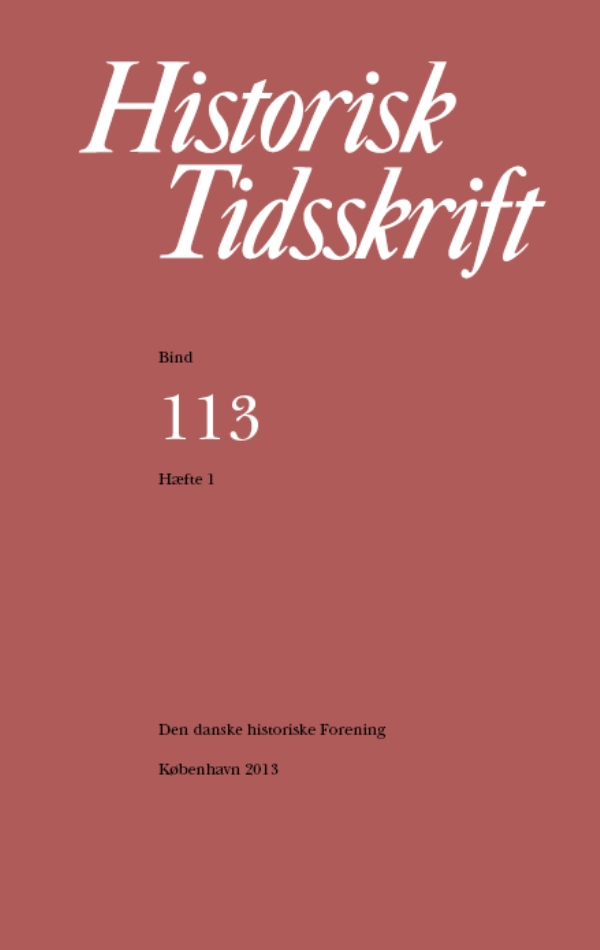Kvinder i mandsklæder
Resumé
Female Transvestism in Denmark in the 18th and Early 19th CenturiesIn the 18th century, several women, whose fate in other respects was likely to pass unnoticed, chose to disguise themselves as men and live as such for long periods of their lives. Studies carried out by scholars in Sweden, The Netherlands and England reveal a few dozens of cross-dressing women in each country. This article presents four, maybe five similar cases from Denmark.In 1714, Sidsel Andersdatter, aged 34, after two childbirths and a subsequent career as wet-nurse, changed her gender identity. She married a young woman, whom she – under secret circumstances – had assisted during pregnancy and delivery and in having the woman’s child registered as legitimately born. Pretending to be male, Sidsel joined the Navy as a cook. The next four years she participated in several naval battles with Sweden. When at home during winter breaks in military activity, she behaved as a man, had herself shaved, carried a rapier and frequented alehouses. After the war, her marriage soured and she left Copenhagen to work as a farmhand. Her wife divorced her and married a better off ship’s clerk. After a while, Sidsel returned to Copenhagen and worked as a tailor until 1728, when her sex was publicly disclosed after she had been leading a man’s life for 14 years. The court sentenced her to two years of hard labour on grounds of the false marriage and on suspicion that a horn she carried, allegedly using it to pee through, had in fact been used as a dildo.Else Kortzdatter disguised herself as a boy at the time of pubescence and worked with nightmen on Zealand. In 1731, 21 years old, she disclosed herself and married an older nightman in the town of Køge.Engelbrecht Maria Stockenbeck, aged 20, after being married in Copenhagen, left her husband and went to Holstein, where she disguised herself as a man and took up the profession of a tailor. Over a period of three years, she moved between many different places in Northern Germany and Jutland as a travelling journeyman. After returning to Copenhagen in 1784 her sex was disclosed. She then applied for and was awarded a royal privilege which allowed her, despite being a woman, to work as a tailor and employ a journeyman.The same year an account of her adventures was published. In the booklet, she told with pleasure of victorious tavern brawls and spoke highly of the solidarity between travelling journeymen. When she once again assumed a female identity, Engelbrecht Maria maintained both the masculine (Engelbrecht) and the feminine (Maria) marker in her name, even though her baptismal name appears to have been Ellen Maria. In the following years she resumed the life of a travelling journeyman, including such lifestyle features as frequenting taverns, only now as a woman. Several times during her travels, she had confrontations with local authorities who disbelieved her claim of a royal privilege to perform an otherwise exclusively male occupation. Her husband filed for divorce after her return to Copenhagen and provided solid proof to the court that Engelbrecht Maria lived with another man, whom she apparently had been bossing around. There are indications that she gave birth to several children.Finally, the tailor and pauper Liebenberg Petersen was discovered to be a woman in 1839, at about the age of 80. She had lived in a village in Jutland for 30 years, first with her wife, who had died 15 years prior to the disclosure. Her remains were now exhumed and examined, corroborating an earlier suspicion that it was really a male person. Thus, Liebenberg and wife had both lived under reversed gender identities. Liebenberg refused to reveal her own past identity or any details about the disguise of the couple. Witnesses reported that Liebenberg, who had a sharp tongue, used to chew and smoke tobacco and take a drink, habits her wife would never engage in.The research in female early modern transvestism has explained the phenomenon partly with the social advantages provided by male status, such as better wages and employment opportunities as well as personal freedom and freedom to travel, partly with sexual attraction to other women. The cases that are analysed in the present study likewise emphasize the social motives to assume a male identity. However, the other presumed motive, the possibility to court and marry other women, corresponds less smoothly with the evidence and is at any rate a gross simplification. Rather, the cross-dressing women did not feel at home in the traditional gender and sexual dichotomies. Even when showing heterosexual preferences, they were nevertheless attracted by the comportment and lifestyle of men.Downloads
Publiceret
Citation/Eksport
Nummer
Sektion
Licens
Ophavsret til bidrag i Historisk Tidsskrift tilhører forfatterne og Den danske historiske Forening som udgiver af Historisk Tidsskrift. For illustrationer gælder den ophavsret, som står anført i billedteksten. Ophavsretslovens almindelige bestemmelser gælder, hvilket vil sige, at ophavsretten gælder i 70 år efter forfatterens død. Bidrag i Historisk Tidsskrift må derfor, med forbehold for en ”moving wall” på tre år, frit downloades, læses, gemmes, anvendes og citeres (med kildeangivelse) i privat og videnskabelig sammenhæng, men de må ikke helt eller delvis genudgives af tredjepart, heller ikke i redigeret form, uden tilladelse fra forfatterne og Den danske historiske Forening. Henvendelse skal i så fald rettes til Historisk Tidsskrifts redaktion på histtid@hum.ku.dk.





